Abstract
1. Purified caeruloplasmin was shown to inhibit lipid autoxidation induced by ascorbic acid or inorganic iron in the following systems: (a) an emulsion of linolenic acid in water; (b) an untreated ox brain homogenate in phosphate buffer; (c) a similar homogenate whose susceptibility to autoxidation had been abolished by dialysis or by heating and then restored by the above pro-oxidants. 2. The optimum conditions for this antioxidant activity were studied. 3. Caeruloplasmin did not inhibit autoxidation by u.v. irradiation in dialysed or preheated homogenates. 4. The apoprotein (without copper) had no antioxidant activity, whereas CuSO4 alone was much less effective as an antioxidant. 5. Iron-free transferrin also had some antioxidant activity.
Full text
PDF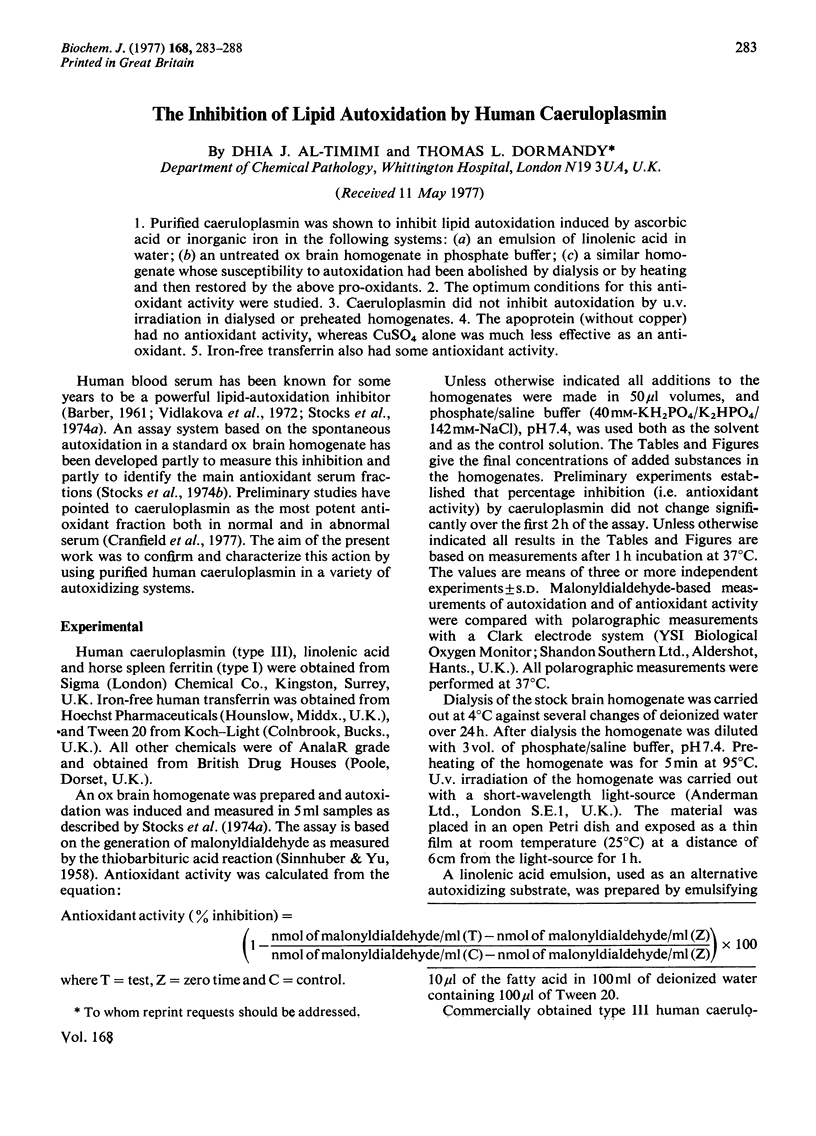
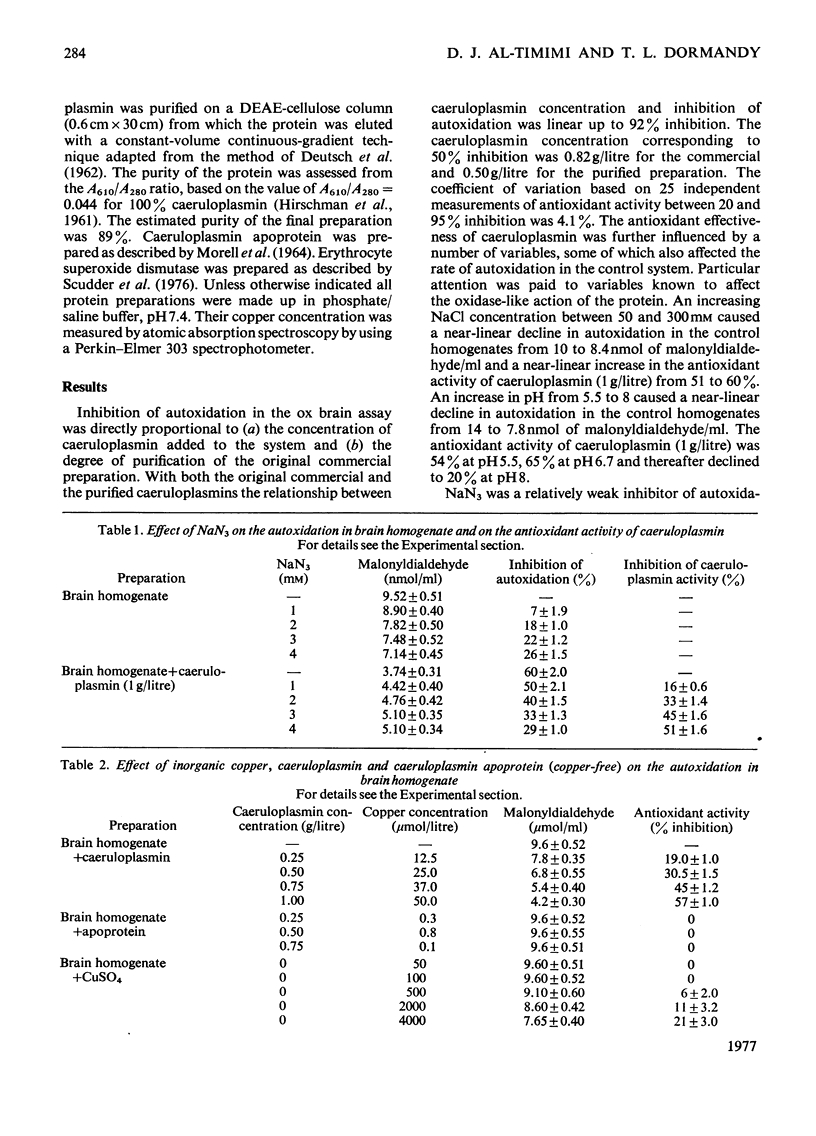
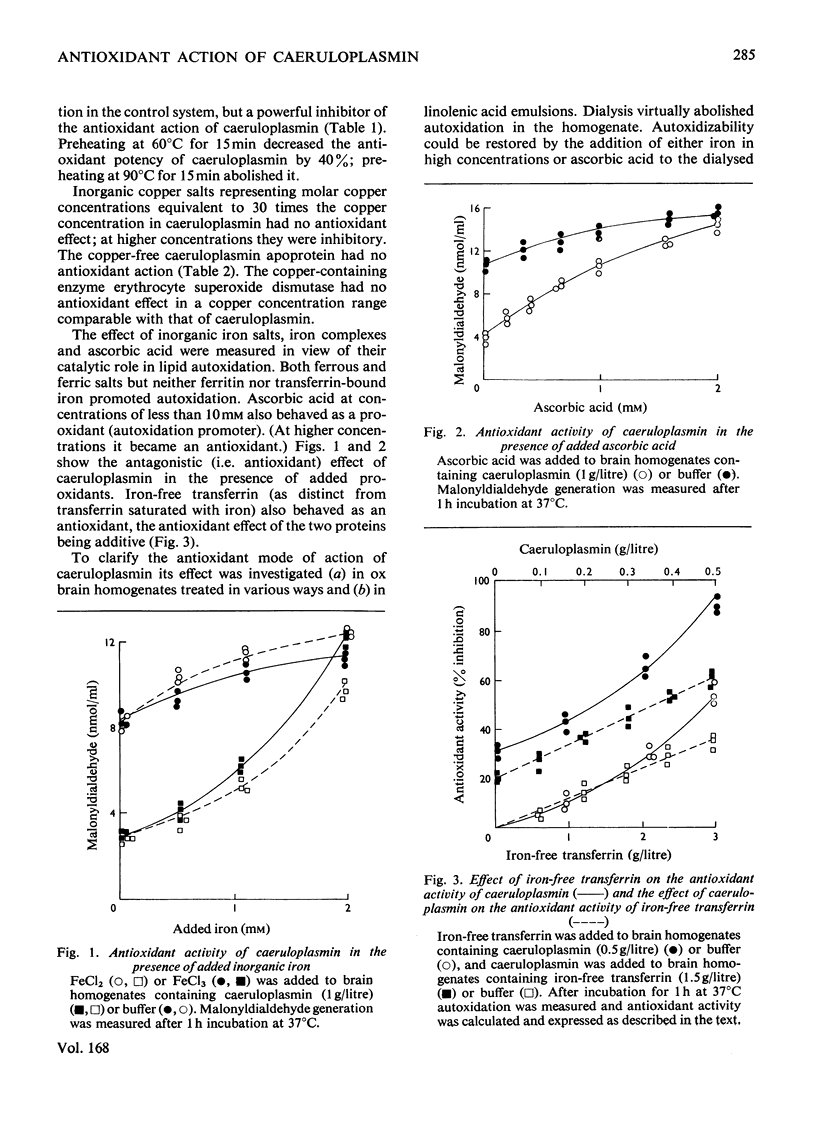
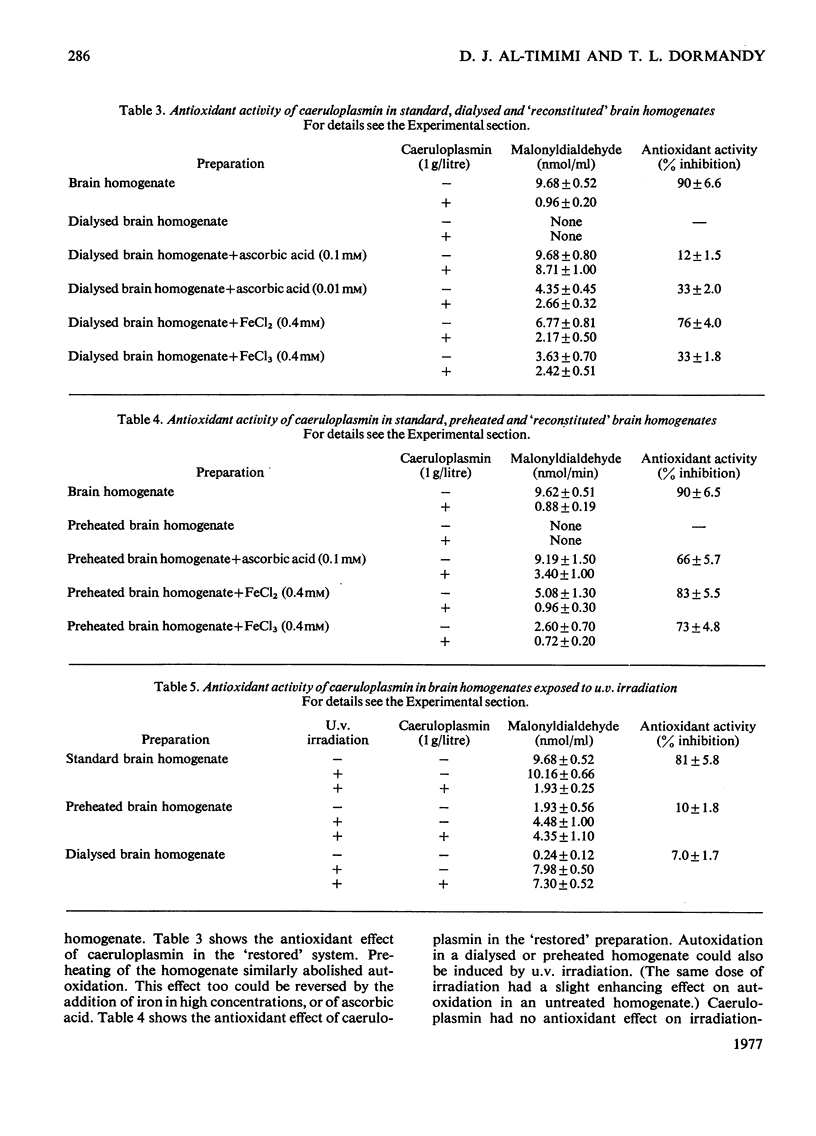
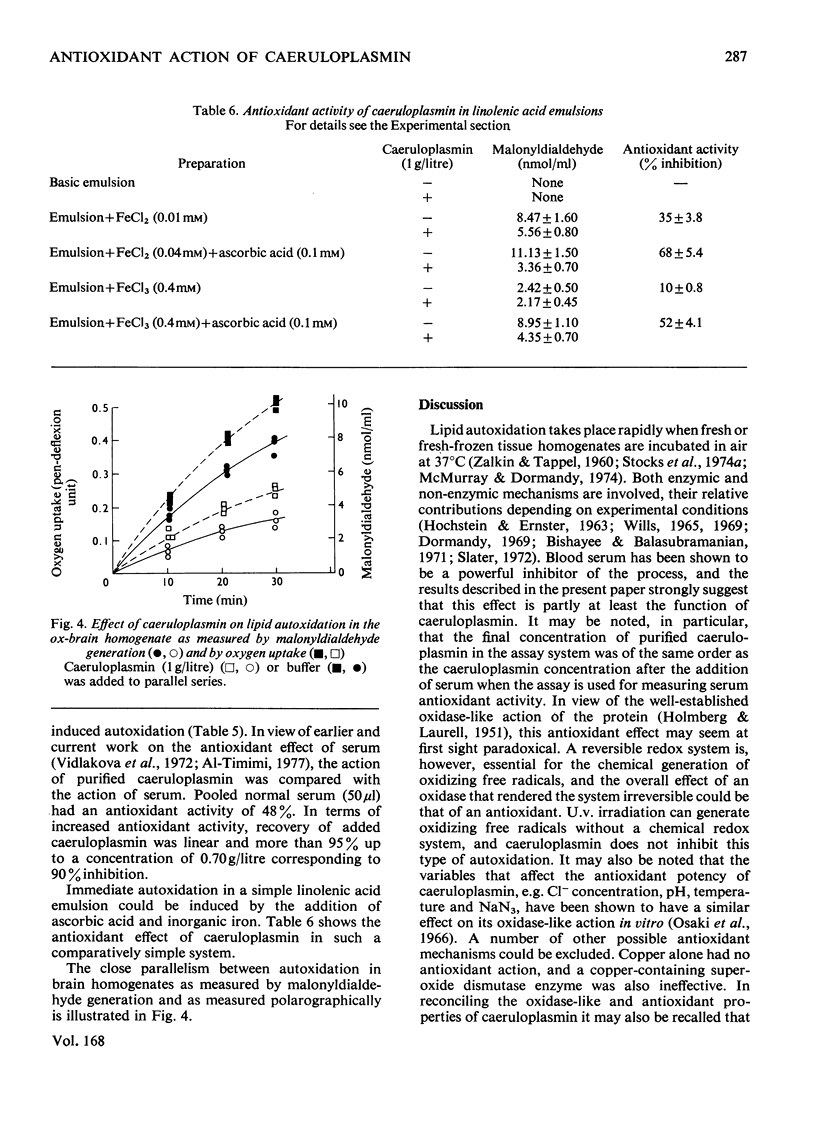
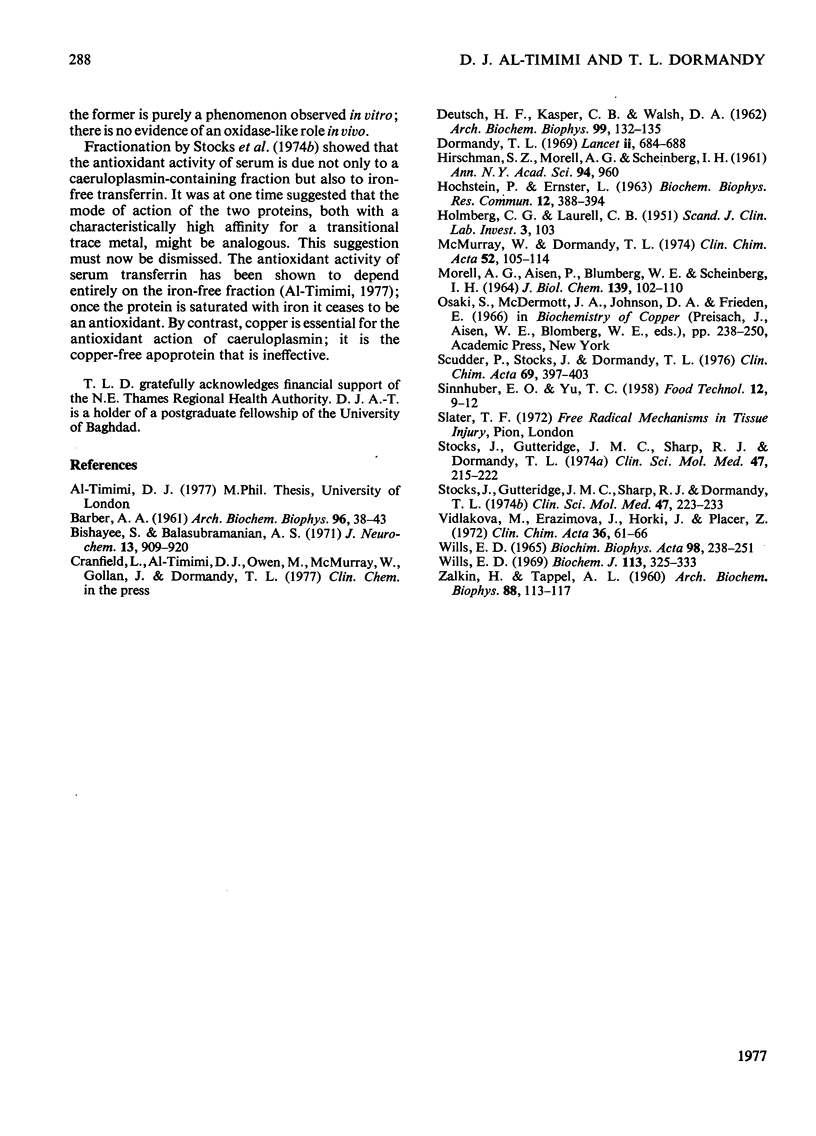
Selected References
These references are in PubMed. This may not be the complete list of references from this article.
- BARBER A. A. Inhibition of lipid peroxide formation by vertebrate blood serum. Arch Biochem Biophys. 1961 Jan;92:38–43. doi: 10.1016/0003-9861(61)90215-6. [DOI] [PubMed] [Google Scholar]
- Bishayee S., Balasubramanian A. S. Lipid peroxide formation in rat brain. J Neurochem. 1971 Jun;18(6):909–920. doi: 10.1111/j.1471-4159.1971.tb12020.x. [DOI] [PubMed] [Google Scholar]
- DEUTSCH H. F., KASPER C. B., WALSH D. A. Rapid method for preparation of crystalline human ceruloplasmin from Cohn fraction IV-1. Arch Biochem Biophys. 1962 Oct;99:132–135. doi: 10.1016/0003-9861(62)90255-2. [DOI] [PubMed] [Google Scholar]
- Dormandy T. L. Biological rancidification. Lancet. 1969 Sep 27;2(7622):684–688. doi: 10.1016/s0140-6736(69)90390-0. [DOI] [PubMed] [Google Scholar]
- HIRSCHMAN S. Z., MORELL A. G., SCHEINBERG I. H. The heterogeneity of the copper-containing protein of human plasma, ceruloplasmin. Ann N Y Acad Sci. 1961 Nov 2;94:960–969. doi: 10.1111/j.1749-6632.1961.tb35588.x. [DOI] [PubMed] [Google Scholar]
- HOCHSTEIN P., ERNSTER L. ADP-ACTIVATED LIPID PEROXIDATION COUPLED TO THE TPNH OXIDASE SYSTEM OF MICROSOMES. Biochem Biophys Res Commun. 1963 Aug 14;12:388–394. doi: 10.1016/0006-291x(63)90111-6. [DOI] [PubMed] [Google Scholar]
- HOLMBERG C. G., LAURELL C. B. Oxidase reactions in human plasma caused by coeruloplasmin. Scand J Clin Lab Invest. 1951;3(2):103–107. doi: 10.3109/00365515109060581. [DOI] [PubMed] [Google Scholar]
- McMurray W., Dormandy T. L. Lipid autoxidation in human skeletal muscle. Clin Chim Acta. 1974 Mar;52(1):105–114. doi: 10.1016/0009-8981(74)90393-3. [DOI] [PubMed] [Google Scholar]
- Scudder P., Stocks J., Dormandy T. L. The relationship between erythrocyte superoxide dismutase activity and erythrocyte copper levels in normal subjects and in patients with rheumatoid arthritis. Clin Chim Acta. 1976 Jun 15;69(3):397–403. doi: 10.1016/0009-8981(76)90111-x. [DOI] [PubMed] [Google Scholar]
- Stocks J., Gutteridge J. M., Sharp R. J., Dormandy T. L. Assay using brain homogenate for measuring the antioxidant activity of biological fluids. Clin Sci Mol Med. 1974 Sep;47(3):215–222. doi: 10.1042/cs0470215. [DOI] [PubMed] [Google Scholar]
- Stocks J., Gutteridge J. M., Sharp R. J., Dormandy T. L. The inhibition of lipid autoxidation by human serum and its relation to serum proteins and alpha-tocopherol. Clin Sci Mol Med. 1974 Sep;47(3):223–233. doi: 10.1042/cs0470223. [DOI] [PubMed] [Google Scholar]
- Vidláková M., Erazímová J., Horký J., Placer Z. Relationship of serum antioxidative activity to tocopherol and serum inhibitor of lipid peroxidation. Clin Chim Acta. 1972 Jan;36(1):61–66. doi: 10.1016/0009-8981(72)90158-1. [DOI] [PubMed] [Google Scholar]
- WILLS E. D. MECHANISMS OF LIPID PEROXIDE FORMATION IN TISSUES. ROLE OF METALS AND HAEMATIN PROTEINS IN THE CATALYSIS OF THE OXIDATION UNSATURATED FATTY ACIDS. Biochim Biophys Acta. 1965 Apr 5;98:238–251. doi: 10.1016/0005-2760(65)90118-9. [DOI] [PubMed] [Google Scholar]
- Wills E. D. Lipid peroxide formation in microsomes. Relationship of hydroxylation to lipid peroxide formation. Biochem J. 1969 Jun;113(2):333–341. doi: 10.1042/bj1130333. [DOI] [PMC free article] [PubMed] [Google Scholar]
- ZALKIN H., TAPPEL A. L. Studies of the mechanism of vitamin E action. IV. Lipide peroxidation in the vitamin E-deficient rabbit. Arch Biochem Biophys. 1960 May;88:113–117. doi: 10.1016/0003-9861(60)90205-8. [DOI] [PubMed] [Google Scholar]


